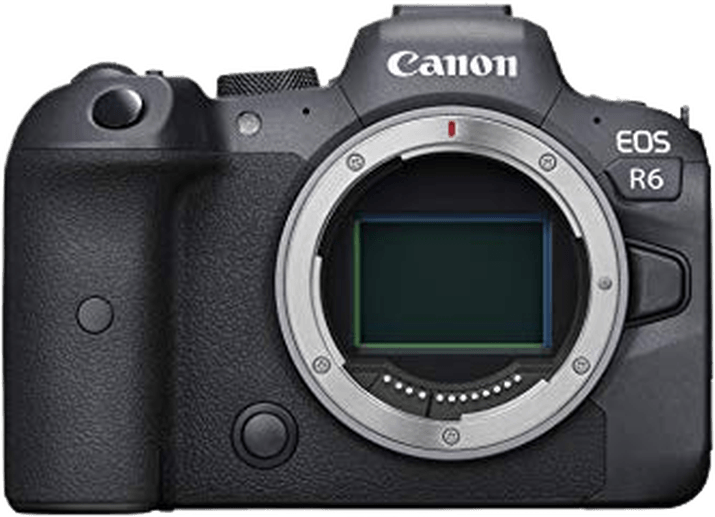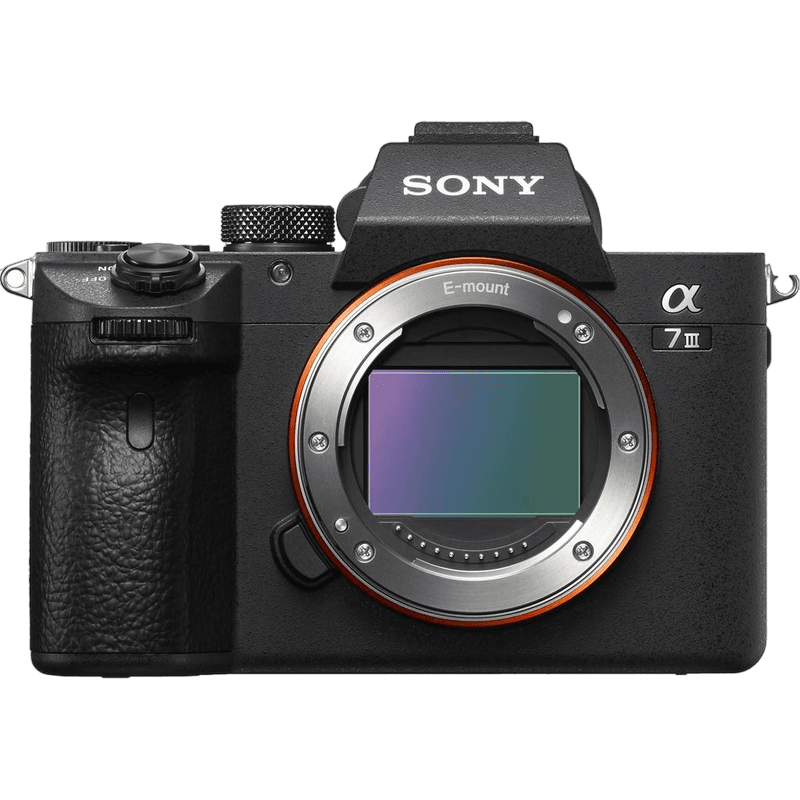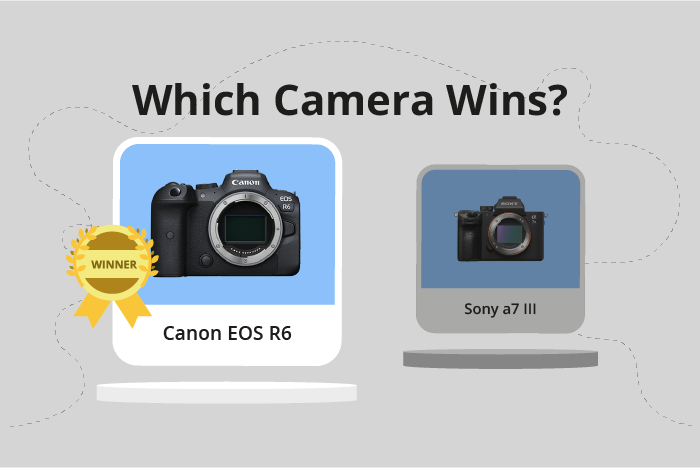Canon EOS R6 vs Sony a7 III Comparison
Canon EOS R6

Sony a7 III

The Canon EOS R6 and Sony a7 III are both mirrorless cameras with a similar scores, showcasing their quality and performance. They also have comparable sizes and weights, with the Canon EOS R6 measuring 138 x 98 x 88mm and weighing 680g, while the Sony a7 III measures 127 x 96 x 74mm and weighs 650g.
The Canon EOS R6, released in 2020, boasts a more recent release date compared to the Sony a7 III, which was released in 2018. This could mean that the Canon EOS R6 may offer more up-to-date features and technology. On the other hand, the Sony a7 III has a slightly smaller and lighter build, making it a more convenient option for photographers who value portability.
Taking these factors into account, both cameras offer impressive specifications and performance. The choice between the two ultimately depends on individual preferences and priorities, such as the importance of cutting-edge technology or a compact design.
Canon EOS R6 vs Sony a7 III Overview and Optics
The Sony a7 III wins the optics comparison with a score of 81/100, while the Canon EOS R6 scores 79/100. Both cameras share some common specifications, such as CMOS sensor type, full-frame sensor size, and image stabilization. They also have different lens mounts – the Canon EOS R6 uses the Canon RF mount, while the Sony a7 III uses the Sony FE mount.
The Sony a7 III has a higher megapixel count at 24.2, compared to the Canon EOS R6 with 20.1 megapixels. This results in better image resolution and detail for the Sony a7 III. Additionally, the Sony a7 III has a higher DXOMARK score for the sensor, at 96, while the Canon EOS R6 scores 90. This means that the Sony a7 III offers better overall image quality.
The Canon EOS R6, however, has a faster shooting speed at 20 frames per second, compared to the Sony a7 III’s 10 frames per second. This makes the Canon EOS R6 more suitable for capturing fast-moving subjects and action photography. The Canon EOS R6 also uses the Digic X processor, whereas the Sony a7 III uses the Bionz X processor.
Comparing the optics of the Canon EOS R6 and the Sony a7 III, the Sony a7 III takes the lead due to its higher megapixel count and better sensor performance. However, the Canon EOS R6 offers advantages in shooting speed and may be more suitable for action photography. Ultimately, the choice between these two cameras depends on the specific needs and preferences of the photographer.
Canon EOS R6 vs Sony a7 III Video Performance
The Canon EOS R6 outperforms the Sony a7 III in video capabilities, with a video score of 91/100 compared to the Sony a7 III’s score of 70. Both cameras share some common specs, such as 4K max video resolution and 3840 x 2160 max video dimensions. However, the Canon EOS R6 surpasses the Sony a7 III in certain aspects, making it the superior choice for videography.
The Canon EOS R6’s most significant advantage is its higher max video frame rate of 120fps, compared to the Sony a7 III’s 30fps. This allows for smoother slow-motion footage and greater flexibility in post-production.
The Sony a7 III, while lagging behind the Canon EOS R6 in video performance, still offers quality 4K video recording. Its 30fps max video frame rate is suitable for most standard video applications, but falls short when compared to the Canon EOS R6’s capabilities.
Taking these factors into account, the Canon EOS R6 is the clear winner in terms of video capabilities. Its higher video score, faster max video frame rate, and built-in time-lapse functionality make it the superior choice for videographers seeking high-quality video performance. While the Sony a7 III is still a capable camera, it is outshined by the Canon EOS R6 in this particular aspect.
Canon EOS R6 vs Sony a7 III Features and Benefits
The Canon EOS R6 outperforms the Sony a7 III with a feature score of 85/100 compared to 81/100. Both cameras share several specifications, including a 3-inch screen size, touchscreen functionality, flip screen, GPS absence, and connectivity options like WIFI and Bluetooth.
The Canon EOS R6 has a higher screen resolution of 1,620,000 dots, providing clearer and sharper image previews than the Sony a7 III’s 921,600 dots. This difference in resolution enables photographers to better assess image quality and make necessary adjustments during a shoot.
On the other hand, the Sony a7 III does not surpass the Canon EOS R6 in any specific feature. However, its slightly lower score of 81/100 still makes it a strong contender in the market. The camera’s performance, paired with its shared specifications with the Canon EOS R6, ensures that it remains a valuable option for photographers.
Considering the feature scores and specifications, the Canon EOS R6 stands out as the superior camera. Its higher screen resolution proves to be an advantage in assessing image quality during shoots. The Sony a7 III, while not excelling in any particular aspect, remains a viable choice due to its shared features with the Canon EOS R6. Ultimately, the decision between these two cameras will depend on the specific needs and preferences of the photographer.
Canon EOS R6 vs Sony a7 III Storage and Battery
The Canon EOS R6 and the Sony a7 III both have a high storage and battery score. They share similarities such as having two memory card slots and accepting SD/SDHC/SDXC cards. However, the Sony a7 III also accepts Memory Stick Duo/Pro Duo/Pro-HG Duo cards, giving it an advantage in storage options.
The Canon EOS R6 has a battery life of 360 shots, while the Sony a7 III outperforms with 750 shots. This makes the Sony a7 III better for longer shooting sessions without needing to change batteries. The Canon EOS R6 uses an LP-E6NH battery, whereas the Sony a7 III uses an NP-FZ100 battery.
Both models support USB charging. This can be beneficial for users who want to charge their camera on the go using power banks or other USB power sources.
Both cameras have their strengths and weaknesses in the storage and battery department. The Sony a7 III has a longer battery life and additional memory card compatibility, making it suitable for extended use and diverse storage options.
Alternatives to the Canon EOS R6 and Sony a7 III
Are you still undecided about which camera is right for you? Have a look at these popular comparisons that feature the Canon EOS R6 or the Sony a7 III:

